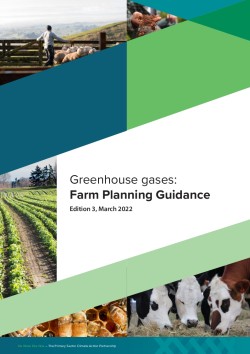Changes to the world climate resulting from greenhouse gas emissions caused by human activity pose an acute threat to civilisation. Under the Paris Agreement, New Zealand is committed to playing its part in reducing emissions so that global temperatures do not increase by more than 1.5 degrees Celsius over pre-industrial levels. Domestically, the Climate Change Response (Zero Carbon) Amendment Act 2019 requires New Zealand agriculture to reduce greenhouse gas emissions.
In June 2023, the new government announced that He Waka Eke Noa – the organisation previously tasked with pricing agricultural emissions – would be disestablished. In its place, the government announced it will be establishing a Pastoral Sector Group (PSG) to combat biogenic methane emissions, with terms of reference in the process of being developed.
DINZ will keep you updated on the PSG’s progress.
2021 Study key findings
- On-farm emissions could be reduced by 0.07% to 0.42% through changing stocking policies or 3.73 to 8.51% by changing land use and decreasing stock numbers.
- An on-farm levy impacted profitability from +13% to -14% (where one farm received income from sequestration).
- A processor levy impacted profitability from +15% to -15% (where one farm received a benefit back to them for sequestration).
- The NZETS processor-level levy impacted profitability from -0.4% to -17% based on 2025 carbon pricing and a 95% free allocation of farm emission credits.
- The GHG calculators assessed in the study varied significantly in their complexity and in their calculations of GHG emissions and sequestration. Some calculators are considerably more complex to use than others and require more time and data input. The emissions calculated ranged from 8.6% difference between tools for one case study, to 27% difference for another. There was also a large range in their calculations of sequestration.
To find out more, click here >>

 He Waka Eke Noa has developed guidance for farmers on developing farm plans designed to reduce greenhouse gas (GHG) emissions and adapt to climate change.
He Waka Eke Noa has developed guidance for farmers on developing farm plans designed to reduce greenhouse gas (GHG) emissions and adapt to climate change. 